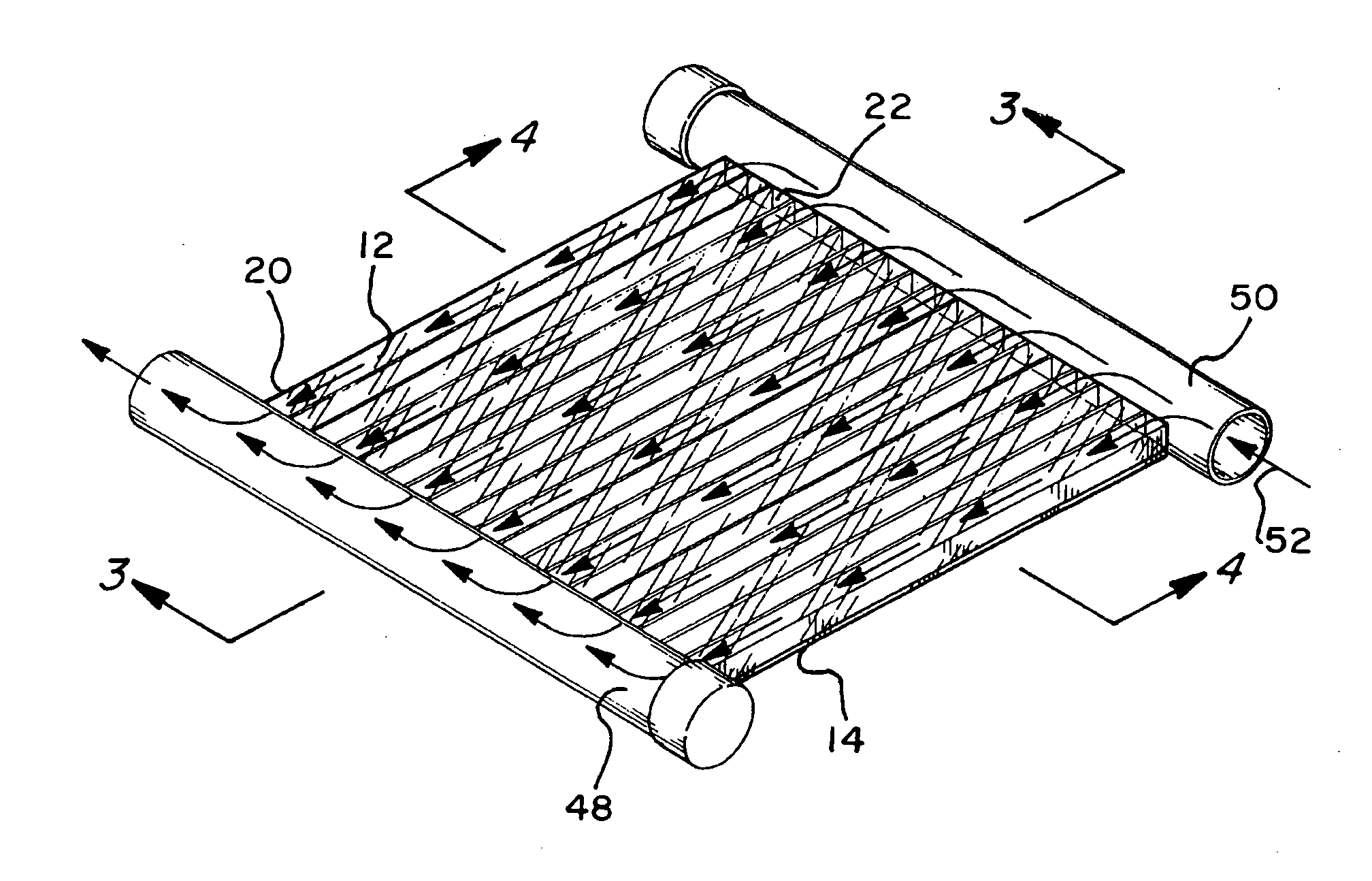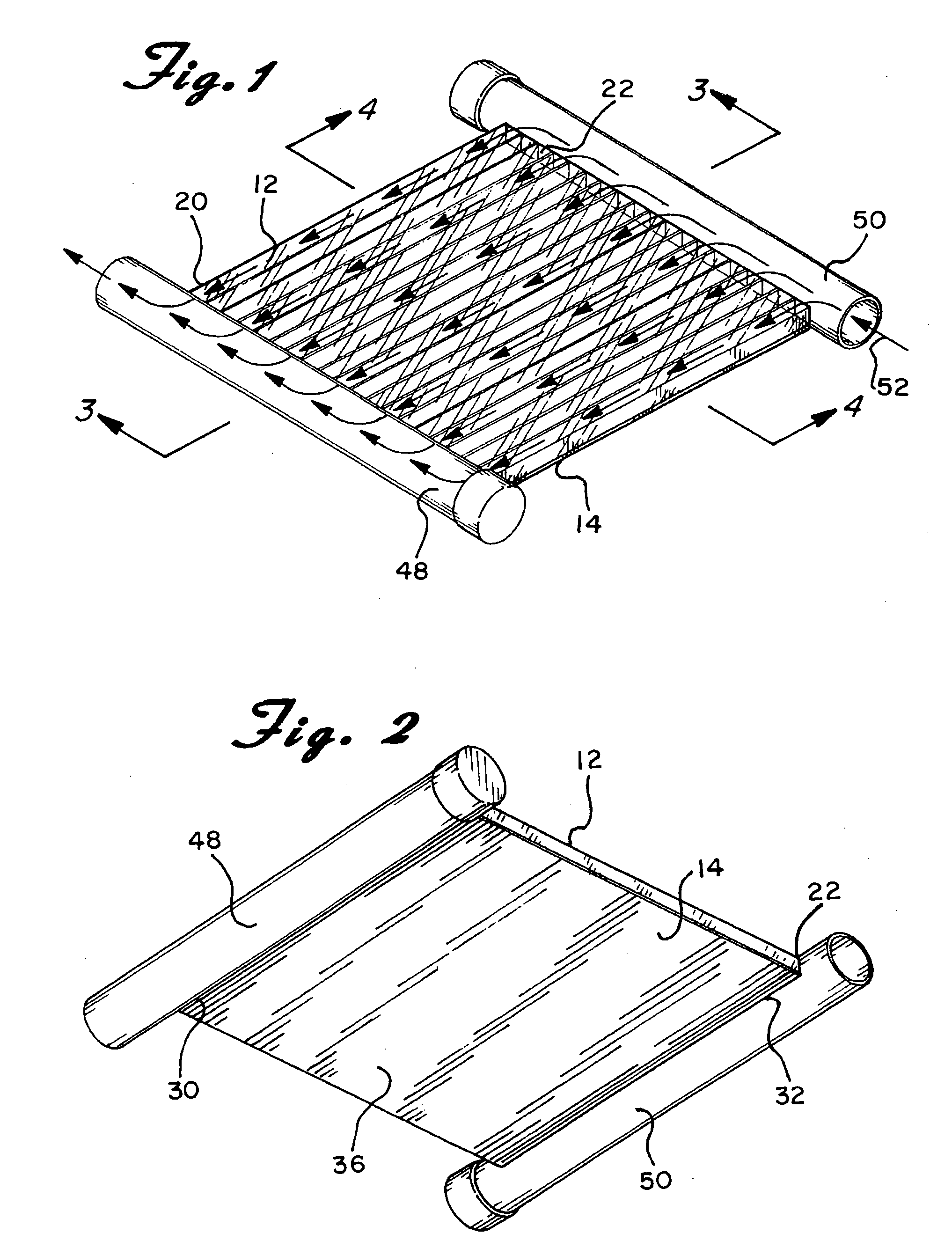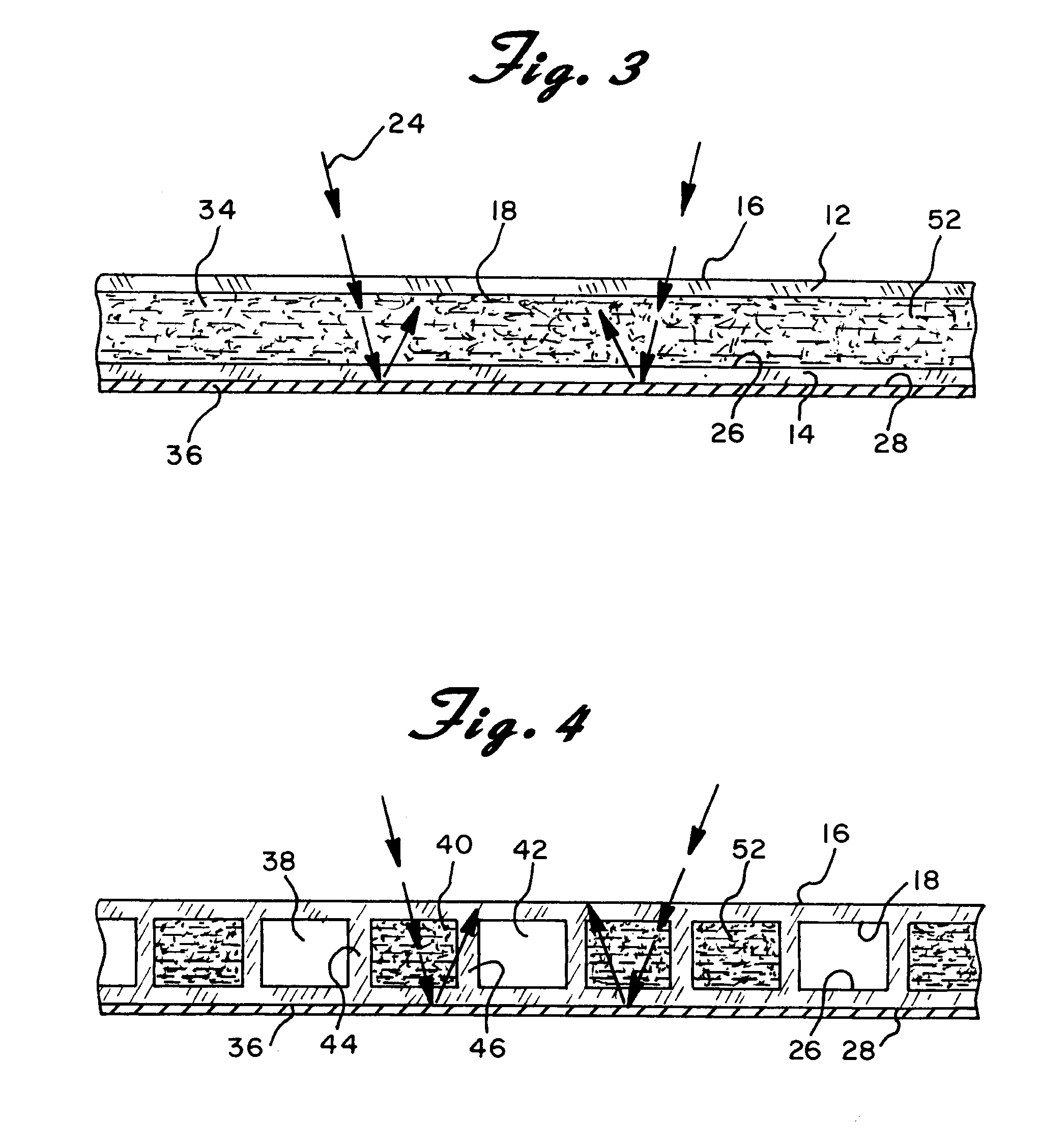Solar panel
a solar panel and solar energy technology, applied in the field of solar panels, can solve the problems of inconvenient maintenance, inconvenient installation, and inability to meet the needs of users, and achieve the effects of easy mass production, low maintenance, and efficient and inexpensive production
- Summary
- Abstract
- Description
- Claims
- Application Information
AI Technical Summary
Benefits of technology
Problems solved by technology
Method used
Image
Examples
Embodiment Construction
[0016]Referring now to the several drawings in detail wherein like reference numerals have been used throughout the various figures to designate like elements, there is shown in FIGS. 1 and 2 a solar panel of the type that utilizes the sun's rays to heat a liquid to be used for providing heat or hot water to a home or other building constructed in accordance with the principles of the present invention and designated generally as 10. The solar panel 10 is comprised essentially of a front panel 12 and a rear panel 14. As shown most clearly in FIGS. 3 and 4, the front panel 12 has a front surface 16 and a back surface 18. It also has a left side edge 20 and a right side edge 22 as shown in FIG. 1. The front panel 12 is substantially transparent and is intended to face the sun so that they sun's rays 24 can pass therethrough substantially uninterrupted.
[0017]Similarly, the rear panel 14 includes a front surface 26, a back surface 28 and left and right side edges 30 and 32, respectively...
PUM
 Login to View More
Login to View More Abstract
Description
Claims
Application Information
 Login to View More
Login to View More - R&D
- Intellectual Property
- Life Sciences
- Materials
- Tech Scout
- Unparalleled Data Quality
- Higher Quality Content
- 60% Fewer Hallucinations
Browse by: Latest US Patents, China's latest patents, Technical Efficacy Thesaurus, Application Domain, Technology Topic, Popular Technical Reports.
© 2025 PatSnap. All rights reserved.Legal|Privacy policy|Modern Slavery Act Transparency Statement|Sitemap|About US| Contact US: help@patsnap.com



